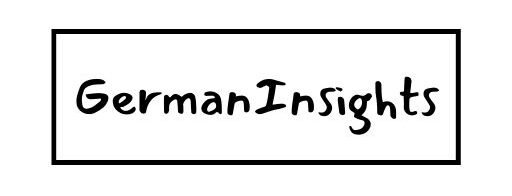Trends in German Business in 2025: A Detailed Breakdown

Germany, a powerhouse of the European economy, is currently undergoing significant shifts across various sectors. Based on current reports and data from August 2025, here is a breakdown of the scenario for each of the four key trends in German business:
Trends in German Business
1. Pharmaceutical Sector Growth
The German pharmaceutical market remains a beacon of strength and growth. As the largest in Europe and fourth globally, it’s projected to expand significantly, boasting a CAGR of 6.2% between 2025 and 2030, with a substantial market size of nearly $69 billion in 2025. This upward trajectory is fueled by considerable biopharmaceutical investments driving innovation in personalized medicine. Furthermore, demographic shifts, particularly Germany’s aging population, are increasing the demand for pharmaceutical products. The sector is also embracing technological integration, leveraging AI for more efficient clinical trials and digital health tools to enhance patient adherence. This paints a promising picture for both domestic and international players in the German pharmaceutical arena.
- Current State: The German pharmaceutical market is robust and expanding.
- Market Position: Largest in Europe, and fourth-largest globally.
- Projected Growth: A Compound Annual Growth Rate (CAGR) of 6.2% is expected from 2025 to 2030, reaching a market size of approximately $68.82 billion in 2025.
- Key Drivers:
- Biopharmaceutical Investments: Strong capital inflow for production and personalized medicine.
- Demographic Changes: The aging population is consistently driving higher demand for pharmaceuticals.
- Technological Integration: Increasing use of AI for clinical trials and digital health tools to enhance patient adherence.
2. Artificial Intelligence (AI) Expansion
The enthusiasm surrounding Artificial Intelligence (AI) in German businesses is palpable. An overwhelming majority (91%) now recognize generative AI as crucial for their future business models, marking a significant jump in awareness. This conviction is translating into increased investment, with most companies planning larger AI budgets. However, the current reality reveals an implementation gap. While strategic importance and investment are high, only around half of German companies are broadly utilizing AI. Adoption remains more prevalent among larger enterprises compared to their SME counterparts. Bridging this gap will be key to unlocking the full potential of AI to drive innovation and efficiency across the German economy.
- Current State: Rapid adoption of AI is underway, but a gap exists between strategy and implementation.
- Strategic Importance: A significant majority (91%) of German companies now consider generative AI critical to their business models.
- Investment: Most companies (82%) plan to increase their AI budgets in the next year, with over half targeting an increase of at least 40%.
- Implementation Gap: Only about 50% of companies are using AI on a broad scale, with many still in selective use. Adoption is much higher in large corporations than in small and medium-sized enterprises (SMEs).
3. Advancements in Robotics and Automation
Despite the long-term promise of robotics and automation, the sector is currently facing headwinds. A projected revenue drop of up to 10% in 2025 across all subsectors signals a challenging year. This downturn is largely attributed to postponed investment plans influenced by global geopolitical uncertainties and heightened competition from Asian rivals. Industry leaders are now emphasizing the urgent need for accelerated innovation, more flexible business strategies, and supportive political reforms to alleviate regulatory burdens and costs. Overcoming these short-term obstacles will be crucial for Germany to maintain its edge in the global robotics and automation landscape.
- Current State: The sector’s long-term potential is high, but it faces short-term challenges.
- 2025 Outlook: A significant revenue drop of up to 10% is forecasted for the German robotics and automation industry.
- Contributing Factors for Downturn:
- Postponed investment plans due to geopolitical tensions.
- Increased competition from Asian rivals.
- Future Focus: Industry leaders are pushing for accelerated innovation, more agile business practices, and political reforms to enhance competitiveness.
4. Transition to Clean Energy
Germany remains committed to its ambitious transition to clean energy, aiming for 80% renewable power by 2030. While progress was made in the first seven months of 2025, adding significant solar and onshore wind capacity, the current pace is insufficient to meet the set targets. Notably, fossil fuels temporarily surpassed renewables in the power mix in early 2025 due to unfavorable weather conditions. Significant challenges remain, particularly in scaling up solar and offshore wind installations within the tight timeframe. Addressing these hurdles requires streamlined permitting processes, faster grid connections for energy storage, and consistent policy support to accelerate the build-out of renewable energy infrastructure.
- Current State: Progress is being made toward clean energy goals, but the pace is currently insufficient to meet 2030 targets.
- 2025 Progress: From January to July 2025, Germany added over 8.6 GW of new renewable capacity, mainly from solar and onshore wind.
- Setbacks: Progress is below the required monthly rate to hit the 80% renewable energy target by 2030. In the first quarter of 2025, fossil fuels temporarily generated more power than renewables.
- Challenges & Solutions: The country has a substantial capacity gap to fill for solar and offshore wind. Efforts are focused on streamlined permitting, accelerated grid connections for energy storage, and supportive policy measures to speed up the transition.
The German business landscape in 2025 is a dynamic mix of robust growth, enthusiastic adoption, temporary setbacks, and persistent challenges. While the pharmaceutical sector continues its strong upward trajectory and the ambition for AI integration is high, the robotics and automation industry is navigating a downturn, and the clean energy transition faces significant hurdles in meeting its ambitious goals.
For international companies looking to engage with the German market, understanding these nuanced trends and the underlying factors will be crucial for identifying opportunities and navigating potential challenges in the years to come.
Germany remains a key global economic player, and its ongoing transformations offer a complex yet compelling landscape for investment and collaboration.






